We’re hooking into a maximum-attack right-hander in front of the lawn bowls club, carving up the back streets and turning the post office and memorial hall into a blur as we light the afterburners up the main drag, ending with a 10 tenths dash towards the yacht club and flat-chat blast to the edge of town.
Icing on the cake is the cops are watching on but not so much as lifting a finger as we scream by to the cheers of locals lining the streets.
People talk about living the dream, but this automotive fantasy recently came to life for me in George Town, on the north coast of Tasmania, as the Targa Tour attacked some of The Apple Isle’s best driving roads.
A companion event to the Targa Tasmania tarmac rally, the tour is for those who want to have a crack on closed sections of public roads without the pressure of a stopwatch, or complexity and cost of a full race set-up.
Hyundai Australia invited CarsGuide to sample its i30 Fastback N over the first three days of the week-long event, covering just under 850km, around 20 per cent (160km) of which is represented by 15 completely closed sections allowing use of all the road, and on occasion, a tiny bit more.
.JPG)
Powered by a 2.0-litre, four-cylinder, turbo-petrol engine producing 202kW/353Nm, the five-door i30 Fastback N is a larger, slightly heavier (+12kg) version of Hyundai’s first serious foray into the hot hatch segment. It’s longer and lower than the original hatch version, but with the same width and wheelbase.
Sending power to the front wheels via a six-speed manual gearbox and electro-mechanical limited-slip diff (E-LSD), the go-fast Hunday was in off-the shelf street trim for the Targa Tour, the only exception being competition brake pads, an understandable upgrade given the intensity of the driving and need to maximise safety.
Installed next to me was professional-grade rally co-driver Julia Barkley, a two-time Targa Tasmania winner (with Tony Sullens) and regular Australian Rally Championship front-runner with an extensive international motorsport CV.
.JPG)
So, the hardware was ready to go and the experience in the passenger seat first-class. The weakest link felt uncomfortably close to home, but there’s no pressure to ‘win’, just have fun doing things we all dream about and would otherwise lead to a determined police raid on licence and wallet.
The tour precedes the hardcore Targa competitors and the fleet includes everything from megabuck current model exotics to well-worn classics and everyday hacks. A roughly 700hp Ferrari 488 Pista lining up next to a humble Subaru Liberty says it all.
Launceston in Tassie’s north-east is the hub for the first half of Targa week, and day one’s three stages – Holwell, Kayena and George Town – are relatively short but typically challenging.
Hydro-electricity development and the long-established timber industry have combined to create some of the best driving roads in the country, and arguably the world.
Rapid changes of direction, elevation and surface quality keep you on your toes, with coarse chip bitumen the norm and damp shadowy patches occasionally crossing over into a mossy green carpet.
.JPG)
And the other thing to keep an eye on is the thousands of spectators lining the course and waving furiously. Kids clinging to school fences, whole families in front yards, and workers on the edge of paddocks give an insight as to how Harry and Megan or Kim and Kanye must feel every day.
That’s the norm on the transport stages, where all road rules and speed limits must be strictly observed, with main beam headlights on and a Big Brother-style Race Safe tracking device transmitting your speed and position back to event control.
.JPG)
On the closed stages a blanket 120km/h speed limit applies, and overtaking is a massive no-no. That top speed may sound low, but for the most part it’s academic because the road twists and turns so tightly, hitting 120 isn’t remotely possible.
And on the open stretches where it would be possible to exceed that number, you’re looking at b-i-g speed. Way too high for a no-roll cage or crash helmet touring event. And as it transpired the top of third gear translated to just under 120km/h, so post that realisation less speedo watching was required.
The i30 N boasts a tricky on-board tuning system allowing adjustment of everything from suspension and steering to throttle response and exhaust sound. And we settled on a ‘Custom’ set-up consisting of throttle, LSD, exhaust and ESC in ‘Sport+’, steering in ‘Sport’, with the suspension in ‘Normal’ and rev-matching off (I prefer to do the heel-and-toe tap dance myself).
.JPG)
The normal suspension mode provides enough compliance to cope with regular bumps and thumps without compromising ultimate grip.
In fact, relative to the i30 N hatch the Fastback’s strut front, multi-link rear suspension incorporates a softer front end with reduced roll stiffness (thanks to a narrower front anti-roll bar), different (adaptive) dampers and longer, softer bump stops.
Holwell is a flowing eight kay stage to kick the third day off, Kayena drops down towards the Tamar River and George Town is all kinds of urban fun. And after the first day’s activities two words are top-of-mind… power down.
Pitch the i30 into a climbing, tightening, slippery corner and the electronic diff combines with the standard 19-inch Pirelli P-Zero rubber (235/35) to get drive to the ground with impressive efficiency.
With maximum torque (353Nm) available from 1450-4700rpm (378Nm from 1750-4200rpm on overboost) you’d expect the drive tyres to be scrabbling for grip. And if you try hard on a damp surface of course traction can be broken, and a hint of torque steer emerges. But it takes a lot of provocation.
On the transport stages a switch to the pre-programmed ‘Normal’ mode transformed the car into a comfortable and refined tourer, while tweaking up the settings produces a properly fast and dynamically outstanding hot hatch.
.JPG)
A series of steep forest climbs and daunting descents typified day two – High Plains, Sheffield, Nook (downgraded to a transport due to road works), Moriarty (Sherlock Holmes was nowhere to be seen) Paloona and Mt Rowland –highlighted the entertaining nature of the exhaust in Sport+, with what sounded like small firecrackers popping and banging from the rear end on high-rpm upshifts and the over-run on the way back down the ratios.
As the event progressed its scale came into clearer focus and it’s important to give a shout out to the event organisers who buttoned down everything from food and facilities to driver behaviour and stage control.
A certain tour team which chose to ignore clear (and regular) advice about the speed cap and need to respect the road rules was immediately pointed in the direction of Devonport and the Spirit of Tasmania ferry for a trip back to the mainland.
And hundreds of volunteer marshals worked in chilly and at times damp conditions out on the course to ensure everyone’s safety. Brilliant job!
Big finish for the day was the 26km Mt Roland stage, the longest we covered, starting with a steep climb up Mt Claude with lots of positively cambered corner combinations, the i30 Fastback N remaining stable, composed and quick.
Thanks to the twin-scroll turbo maximum torque is available from just 1450rpm, and even in tight, borderline hairpin corners, third gear was the best option, the low-down grunt arriving in a smooth, linear fashion.
.JPG)
The first of six stages on day three was The Sideling, claimed to be one of the key Targa stages to sort the wheat from the chaff in terms of outright and category placings.
As usual, Julia’s clear and confident calls helped us remain in contact with the road surface (unlike an unfortunate Porsche 911 we passed shortly after it had joined the rainforest scenery) and familiarity with the Fastback N meant we were covering the ground at an increasingly rapid rate.
Day three also included a quick swap into another i30 Fastback N (we were in one of four on the tour), this time fitted with the $3000 ‘Luxury Pack’ which adds front parking sensors, LED courtesy and puddles lights, power-folding exterior mirrors, rain-sensing wipers, electric front seats (with memory for the driver), leather and suede trim, auto-dimming rear view mirror, heated front seats and steering wheel, keyless entry and start, rear tinted glass and Qi wireless phone charging.
.JPG)
The most noticeable change in the swap to the luxury pack car was the extra height of the driver’s seat, electric motors underneath making the lowest position feel like you’re sitting on top of the car rather than in it. Give me the standard seats any day.
Following The Sidling, Moorina and Weldborough Pass dialled up the twists and turns, with Pyengana best known for large and exceptionally immovable trees close to the road. Despite constant, rapid changes of direction the steering remained on point throughout, with good road feel and reassuring accuracy.
The Elephant Pass lived up to its name with sharp switchbacks and steep drops, while Rossarden’s sweeping bends and final “Extreme Caution” descent delivered an attention-grabbing finish.
Hyundai I30 2019: Fastback N Performance
| Engine Type | Turbo 4, 2.0L |
|---|---|
| Fuel Type | Premium Unleaded Petrol |
| Fuel Efficiency | 8.8L/100km (combined) |
| Seating | 5 |
| Price From | $29,700 - $35,750 |
Verdict
At $41,990, plus on-road costs, the i30 Fastback N commands a $1500 premium over its hatch stablemate. Which is plenty for a Hyundai i30, but a relative bargain when you think about Volkswagen’s Golf GTI at $46,190.
Yes, the GTI is fitted standard with a seven-speed dual-clutch auto, and it’s a brilliant machine. But the i30 N boasts more power (+22kW) and torque (+8Nm on overboost) and on the basis of this special test opportunity matches the iconic German in terms of dynamic response and overall engineering quality. The rise and rise of Hyundai N continues.
Has Hyundai hit the hot-hatch big time? Tell us what you think in the comments section below.
Note: CarsGuide attended this event as a guest of the manufacturer, with travel and meals provided.
Pricing Guides


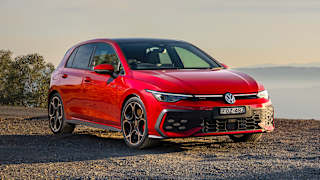





.JPG)
.JPG)
.JPG)
.JPG)
.JPG)
.JPG)
.JPG)
.JPG)
.JPG)
.JPG)
.JPG)
.JPG)
.JPG)
.JPG)
.JPG)
.JPG)
.JPG)
.JPG)
.JPG)
.JPG)
.jpg)


.jpg)
.jpg)


.jpg)
.JPG)
.JPG)
.JPG)
.JPG)
.JPG)
.JPG)
.JPG)
.JPG)
.jpg)
.jpg)




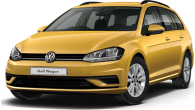








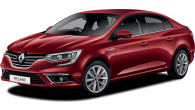








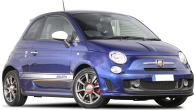

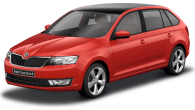
.jpg)
.jpg)
.jpg)
.jpg)

.jpg)
.jpg)